Spotlight on Free Union
-
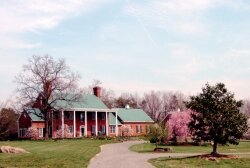 Bradford Hall, 4225 Ballards Mill Road - 4 BR, 5 full & 1 half-bath, 6308 sq. ft., 93.20 acres, asking price: $2,850,000, assessment: $1,326,000 (land use status), Frank Quayle, Roy Wheeler Realty Co., 434-409-8820Elizabeth Neff
Bradford Hall, 4225 Ballards Mill Road - 4 BR, 5 full & 1 half-bath, 6308 sq. ft., 93.20 acres, asking price: $2,850,000, assessment: $1,326,000 (land use status), Frank Quayle, Roy Wheeler Realty Co., 434-409-8820Elizabeth Neff -
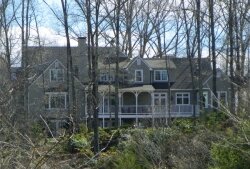 Stone Hill, 2465 Cascades Drive - 5 BR, 4 full & 2 half-baths, 9209 sq. ft., 21.56 acres, asking price: $1,995,000, assessment: $1,098,700 (land use status), Jim Faulconer, McLean Faulconer, Inc., 434-981-0076Samantha Masone
Stone Hill, 2465 Cascades Drive - 5 BR, 4 full & 2 half-baths, 9209 sq. ft., 21.56 acres, asking price: $1,995,000, assessment: $1,098,700 (land use status), Jim Faulconer, McLean Faulconer, Inc., 434-981-0076Samantha Masone -
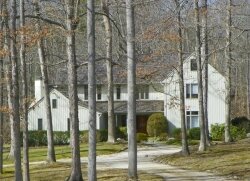 4410 Old Fields Drive - 4 BR, 3 full & 2 half-baths, 4951 sq. ft., 5.39 acres, asking price: $795,000, assessment: $900,700, Steve McLean, McLean Faulconer, Inc., 434-981-1863Samantha Masone
4410 Old Fields Drive - 4 BR, 3 full & 2 half-baths, 4951 sq. ft., 5.39 acres, asking price: $795,000, assessment: $900,700, Steve McLean, McLean Faulconer, Inc., 434-981-1863Samantha Masone -
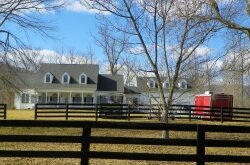 6540 Free Union Road - 5 BR, 3 full & 1 half-bath, 6428 sq. ft., 6.55 acres, asking price: $450,000, assessment: $657,700, Margaret Ramsey, Charlotte Ramsey, Inc., 434-953-7057Samantha Masone
6540 Free Union Road - 5 BR, 3 full & 1 half-bath, 6428 sq. ft., 6.55 acres, asking price: $450,000, assessment: $657,700, Margaret Ramsey, Charlotte Ramsey, Inc., 434-953-7057Samantha Masone -
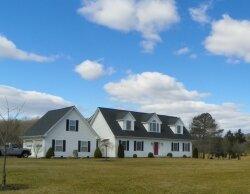 2412 Davis Shop Road - 3 BR, 2 full & 1 half-bath, 3876 sq. ft., 3.90 acres, asking price: $389,000, assessment: $307,900, Aaron Manis, Sloan Manis Real Estate Partners, 434-962-7039Samantha Masone
2412 Davis Shop Road - 3 BR, 2 full & 1 half-bath, 3876 sq. ft., 3.90 acres, asking price: $389,000, assessment: $307,900, Aaron Manis, Sloan Manis Real Estate Partners, 434-962-7039Samantha Masone -
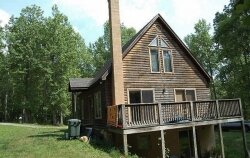 6500 Free Union Road - 3 BR, 2 baths, 2182 sq. ft., 5.10 acres, asking price: $210,000, assessment: $225,000, Rob Alley, RE/MAX Assured Properties, 434-220-7133Robert Alley
6500 Free Union Road - 3 BR, 2 baths, 2182 sq. ft., 5.10 acres, asking price: $210,000, assessment: $225,000, Rob Alley, RE/MAX Assured Properties, 434-220-7133Robert Alley
Area: Free Union
Price range: $55,000-$9,650,000
Schools: Meriwether Lewis, Henley, Western Albemarle
Pros: dramatic scenery, privacy, proximity to Blue Ridge
Cons: high prices, distance to town, potentially difficult access in bad weather
In 1761, the small town of Nicksville, named for the spot where a freed slave set up a blacksmith’s shop, became part of Albemarle County. In 1837, Nicksville saw the creation of the Free Union Church, so named because people of all races were free to worship there, and because the church represented a union between four denominations of Christianity. When a post office was established there 10 years later, it took its name from the church in order to avoid confusion with another, previously established town named Nixville. In 1911, Free Union had a population of 60 people; nearly 100 years later, that number has more than tripled with the 2010 census recording a population of 193. Community news, a business directory and a more complete history can be found at www.freeunion.com.
Fast forward to the present day. MLS has 16 active listings that name Free Union as the designated city, although this isn’t a wholly definitive criterion since the lines between the area described as Free Union and its neighbors, Whitehall and Boonesville, are not always so distinct. The offerings vary in size from 2.32 to 190 acres and in price from $210,000 to $2,850,000. The MLS also reports 12 sales within Free Union over the past 2 years with acreages ranging from 1.5 to 1,478 and prices from $55,000-$9,650,000.
While the latter certainly doesn’t represent the largest sales figure ever seen in Albemarle County, Free Union was home to the 2005 sale of Chapel Springs Farm for $18,000,000, which ranks as one of the largest sales of non-commercial property recorded on the MLS.
With everything from a cedar-sided cabin on five acres priced at $210,000 to a 6,300-sq. ft. colonial on 93 acres for $2,850,000, Free Union, it would seem, has something to fit nearly every taste and budget. For those who want a rural setting but appreciate the camaraderie of a subdivision, there are also several established developments to choose from. There has long been a perception, however, that the bargains are few and far between.
“A lot of buyers are captivated by the views as you get closer to the Blue Ridge, the roll of the land, the variety of colors in the countryside,” explains Jim Bonner, a farm and estate specialist with Roy Wheeler Realty Co. “Historically, values have been driven up by the rivers, the mountains, the Western district schools, the hunt club, and the proximity to the Shenandoah National Park.”
“There are some very attractive homes tucked away in those hills that offer privacy and dramatic views, a combination that commands the prices for those who appreciate the landscape,” Bonner adds.
Indeed, there are an impressive number of farms of the if-you-have-to-ask-you-can’t-afford-it variety located along the narrow, rutted gravel roads that criss-cross the Free Union countryside. There are also, however, numerous homes of a more modest nature, and more than a few that appear to reflect the eclectic and artistic nature of the occupants.
With all the rolling hills, private homesteads and natural beauty, the potential negatives about life in Free Union are the most obvious ones– the distance from restaurants and grocery stores, the possible difficulties navigating those rutted roads in bad weather, the likely power outages that occur when microbursts and derechos swing our way.
For those folks who appreciate the conveniences of city life, these factors may add up to a cost that prohibits considering such a location altogether, but those who prefer a rural lifestyle over subdivision living may consider the price more palatable than HOA dues and special assessments.
1 comment
Free Union, The sweet spot for the seventies "move to the country, eat alotta peaches" movement.. Now full of aging boomers who wonder what the hell they were thinking as they deal with maddening commutes, lack of access to groceries and other essentials, frequent lengthy power outages, etc. Today's young by contrast want little to do with that lifestyle, preferring instead to live in urban areas. What does this mean for overbuilt outlying areas marketability going forward into the future, especially with energy supplies growing more expensive? It could mean properties out there may not be so highly prized in years to come..